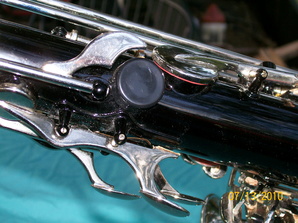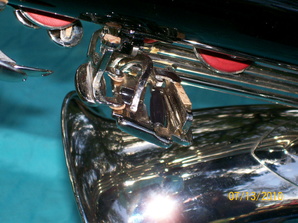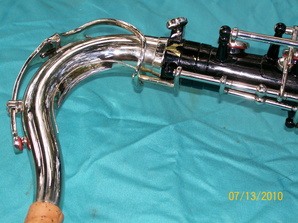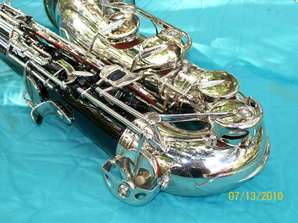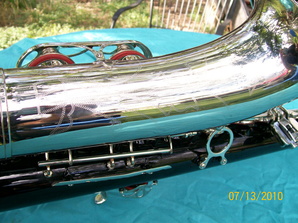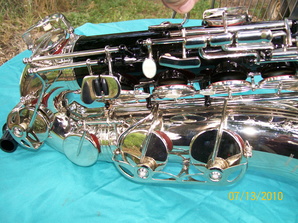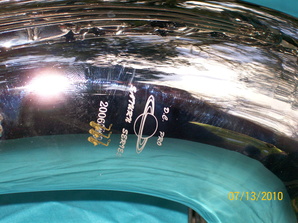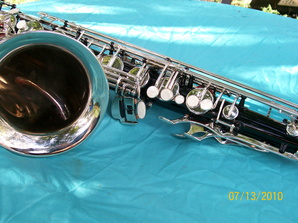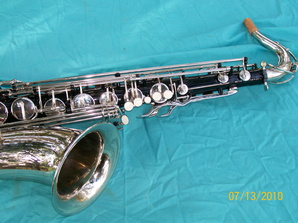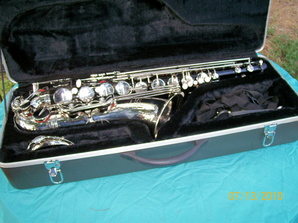(Helen) These horns all have something in common: they come from either China or Taiwan, and from unknown manufacturers. Unlike the vintage saxophones made by the American companies of yesteryear, or European companies like J. Keilwerth and Pierret, today's Asian-made saxophones are cloaked in secrecy.
Who makes these horns? Most times this is not known, and many dealers won't tell you who their stencil manufacturer is. Why this secrecy? That's a really good question. Dealers give all kinds of supposed reasons for this secrecy, but none really make sense when you consider that in the past, a horn's pedigree was not classified as "need to know only basis".
In any event, given the amount of these horns that are flooding the marketplace, I thought it was fitting that at least a few of them end up in this gallery.
Who makes these horns? Most times this is not known, and many dealers won't tell you who their stencil manufacturer is. Why this secrecy? That's a really good question. Dealers give all kinds of supposed reasons for this secrecy, but none really make sense when you consider that in the past, a horn's pedigree was not classified as "need to know only basis".
In any event, given the amount of these horns that are flooding the marketplace, I thought it was fitting that at least a few of them end up in this gallery.
Page generated in 0.067 s (23 SQL queries in 0.059 s) -
Powered by Piwigo




